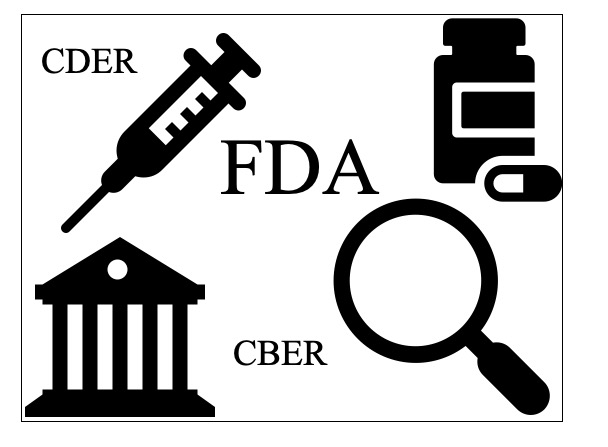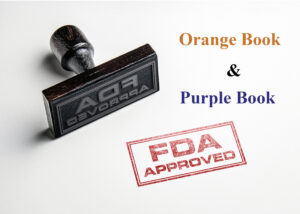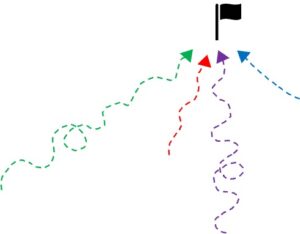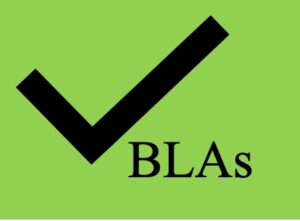In the life science, biotech, and pharmaceutical industries, there is a niche industry called therapeutics and modalities. Companies in this space work to discover, develop, and commercialize products that are administered to patients for the treatment of diseases and disorders. Before these products can be administered to patients in the U.S., they need to undergo a rigorous approval process at the Food and Drug Administration (FDA).
Therapeutics and modalities are drugs, such as small molecules, antibodies, bispecifics, or oligonucleotides. They are administered to patients to treat diseases, disorders, or certain symptoms of diseases and disorders. The different types of therapeutics and modalities usually fall within one of five classes: small molecules, large molecules, gene therapy, RNA therapy, and cell therapy. Each therapeutic needs to be approved by the FDA before it can be administered to patients in the U.S.
The FDA is the regulatory agency in the U.S. that protects public health by ensuring the safety, efficacy and security of human and veterinary drugs, vaccines, and biological products. The FDA also regulates medical devices, cosmetics, dietary supplements, electronic radiation emitting products, and tobacco products. There are various offices and centers at the FDA, but six centers are responsible for approving and regulating consumer products. The six centers at the FDA responsible for regulating and approving consumer products are:
Center for Biologics Evaluation and Research
The Center for Biologics and Evaluation and Research (CBER) regulates and approves certain biological and related products. Biological products such as blood products, vaccines, allergenics, tissues, cell-based therapies, and gene therapies.
Center for Devices and Radiological Health
The Center for Devices and Radiological Health (CDRH) regulates medical devices and radiation-emitting products. Examples include surgical lasers, blood warmers, catheters, and stents.
Center for Drug Evaluation and Research
The Center for Drug Evaluation and Research (CDER) regulates and approves over-the-counter and prescription drugs. Examples include small molecule drugs, antibodies, shampoos, sunscreens, and certain oligonucleotide-based therapeutics.
Center for Food Safety and Applied Nutrition
The Center for Food Safety and Applied Nutrition (CFSAN) regulates food, cosmetics, and dietary supplement products.
Center for Tobacco Products
The Center for Tobacco Products (CTP) regulates tobacco-containing products.
Center for Veterinary Medicine
The Center for Veterinary Medicine (CVM) regulates drugs, food, and devices for use by animals.
Which centers at the FDA approve therapeutics?
Of these six centers at the FDA, two are responsible for ensuring the safety, efficacy, and security of human drugs, vaccines, and biological products: CDER and CBER. CDER and CBER are responsible for approving and regulating all the therapeutics that fall within the five classes of therapeutics and modalities. So, if a therapeutic is administered to a patient in the U.S., it must first be regulated or approved by either CDER or CBER.
Therapeutics or modalities may be approved at the FDA when an applicant submits a New Drug Application (NDA) or a Biologics License Application (BLA). Each therapeutic, whether a small molecule, large molecule, gene therapy, RNA therapy, or cell therapy, is approved under either an NDA or BLA. A drug might be referred to as an NDA drug or a BLA drug, which is meant to specify which type of application it may be approved under.
Which center at the FDA approves NDAs and BLAs?
Each NDA or BLA for a therapeutic is approved by either CDER and CBER. CDER and CBER can approve both types of applications. So, if a drug is referred to as a CDER drug, it just means that it is being reviewed and approved by CDER; it does not indicate whether it is an NDA or BLA. This is because CDER approves both types of applications. The majority of NDAs are approved by CDER, but CBER can also approve NDAs.
What type of application is a therapeutic approved under?
Determining whether a therapeutic should be approved under an NDA or BLA requires an understanding as to the drug’s composition and manufacturing process. Usually, professionals in life sciences, biotechnology, and pharmaceuticals understand the differences between each type of therapeutic. For example, professionals understand the difference between an antisense oligonucleotide and an siRNA molecule. There is an executive-level course on therapeutics and modalities that was created and developed for professionals in the life sciences, biotech, and pharmaceutical industries. It is a course that covers the different classes of therapeutics, designed for professionals with a limited background in science or no science background at all.
Understanding whether a drug is approved under an NDA or BLA has certain implications for the overall value or investment potential of the therapeutic. Professionals in the life sciences, biotech, and pharmaceutical industries should know how to determine if a drug would be approved under an NDA or BLA. Also, any professional in these industries should also know how to determine whether a drug is approved by CDER or CBER.
What is the difference between CDER and CBER?
As stated above, CBER and CDER approved both NDAs and BLAs. So it is not the type of application that determines whether a drug is regulated and approved by CDER or CBER. Instead, it has to do with the actual therapeutic – its composition and how it is manufactured or produced for use in humans.
CDER is responsible for approving a wide variety of therapeutics. This would include therapeutics such as small molecules, antibodies, peptides, and oligonucleotide-based therapeutics. For example, Epkinly (a bispecific antibody) was approved by CDER in 2023. Most small molecules are regulated and approved by CDER.
CBER is responsible for approving products within the gene therapy and cell therapy space. For example, Casgevy (a cell and gene-based therapeutic) was approved by CBER in 2023. If the therapeutic is based on cell therapy or gene therapy, it would be regulated and approved by CBER.
Understanding the regulatory pathway of a therapeutic, whether it is approved under an NDA or BLA, and whether it would be approved by CDER or CBER, starts with a comprehensive understanding of the various therapeutics common in life sciences, biotech, and pharma. A professional in life sciences, biotech, or pharma looking to get up to speed on therapeutics should enroll in the Executive Course: Therapeutics and Modalities. This course provides comprehensive education on five classes of therapeutics: small molecules, large molecules, gene therapy, RNA therapy, and cell-based therapeutics.




